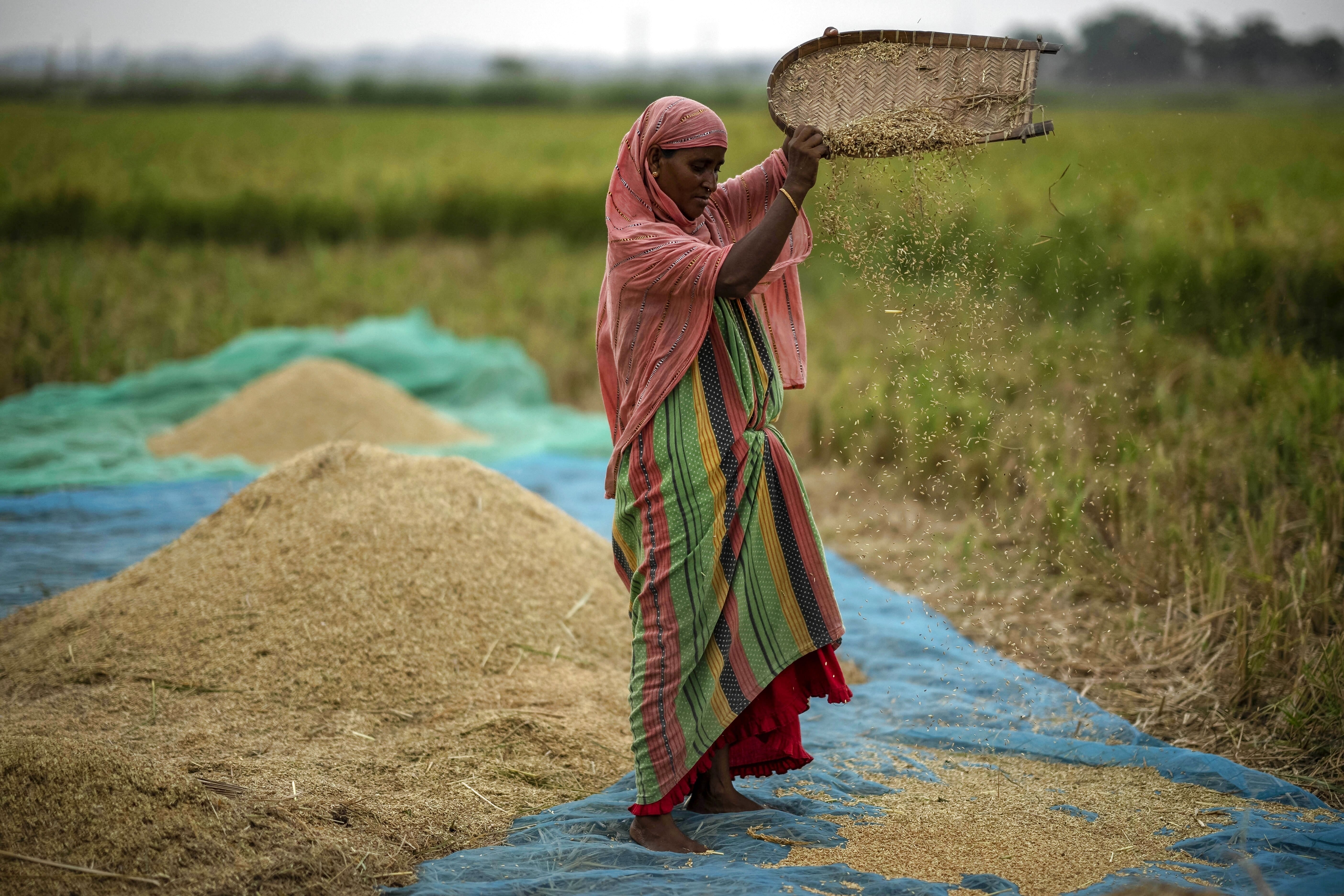
views
The government has decided to restrict the export of basmati rice below USD 1,200 per tonne, in the latest move to control retail price of the foodgrains. With this latest curb, India has now imposed restrictions on all varieties of non-basmati rice.
The commerce ministry said that the move will restrict possible “illegal” shipment of white non-basmati rice in the garb of premium basmati rice and has directed trade promotion body APEDA not to register contracts below USD 1,200 per tonne.
Why Govt Restricted basmati Rice Export
The government has been putting curbs on the export of different varieties of rice since last year due to two primary reasons:
– To control retail prices of rice and ensuring domestic supply for food security.
– To restrict “illegal” shipment of some varieties amid huge demand abroad.
The rice harvest was affected as India received irregular pre-monsoon rains leading to reduced crop production.
In September last year, India banned exports of broken rice to sustain production of ethanol that would help the successful implementation of the government’s Ethanol Blending Programme (EBP).

On July 20, India banned the export of non-basmati white rice to stabilise the volatile retail prices in the country raising concerns across countries in Africa, Asia and the United States.
Last week, a 20 percent export duty was slapped on par-boiled non-basmati rice to maintain adequate local stock.
Amid these restrictions, a large quantity of non-basmati white rice was being exported in the garb of premium basmati rice at a lower price being $359 per tonne.
Therefore, the government ordered that contracts for basmati exports with the value of $1,200 per MT (tonne) only and above should be registered for issue of Registration – cum – Allocation Certificate (RCAC). All other existing contracts below $1,200 per tonne have been kept in abeyance, according to the government statement.
India’s Rice Export
India accounts for more than 40 percent of all global rice shipments, while non-basmati white rice constitutes about 25 percent of the total rice exported from the country.
The total exports of basmati rice stood at $4.8 billion in 2022-23 in terms of price, while in volume terms it was at 45.6 lakh tonne. Exports of non-basmati stood at USD 6.36 billion in the last fiscal. In volume terms, it was 177.9 lakh tonne.
India’s rice production is estimated to have risen to 135.54 million tonne in the 2022-23 crop year (July-June) from 129.47 million tonne in the previous year, according to the agriculture ministry data.
On the other hand, the export of parboiled rice has grown 21.18 percent, from 3.29 MMT during current year compared to 2.72 MMT in 2022.
The export of basmati rice, meanwhile, has increased by 9.35 percent, 1.86 MMT in current year compared to 1.70 MMT during previous year.
Which Countries Are Affected?
India, the world’s biggest rice exporter, exported 22 million tonnes of rice to 140 countries. Some of the worst countries that have been affected by the subsequent restrictions include Bangladesh and Nepal, which depend on the white rice; and African countries like Benin, Senegal, Togo, and Mali, which import broken rice.
Ever since India imposed restrictions on rice exports, the price of the foodgrain has risen in the international market. Nepal has seen rice price rise after India announced the ban while in Vietnam, the price of the foodgrain is highest in more than a decade.
Countries including Singapore, Indonesia and the Philippines have urged India to resume rice exports to their nations, according to CNN.


















Comments
0 comment